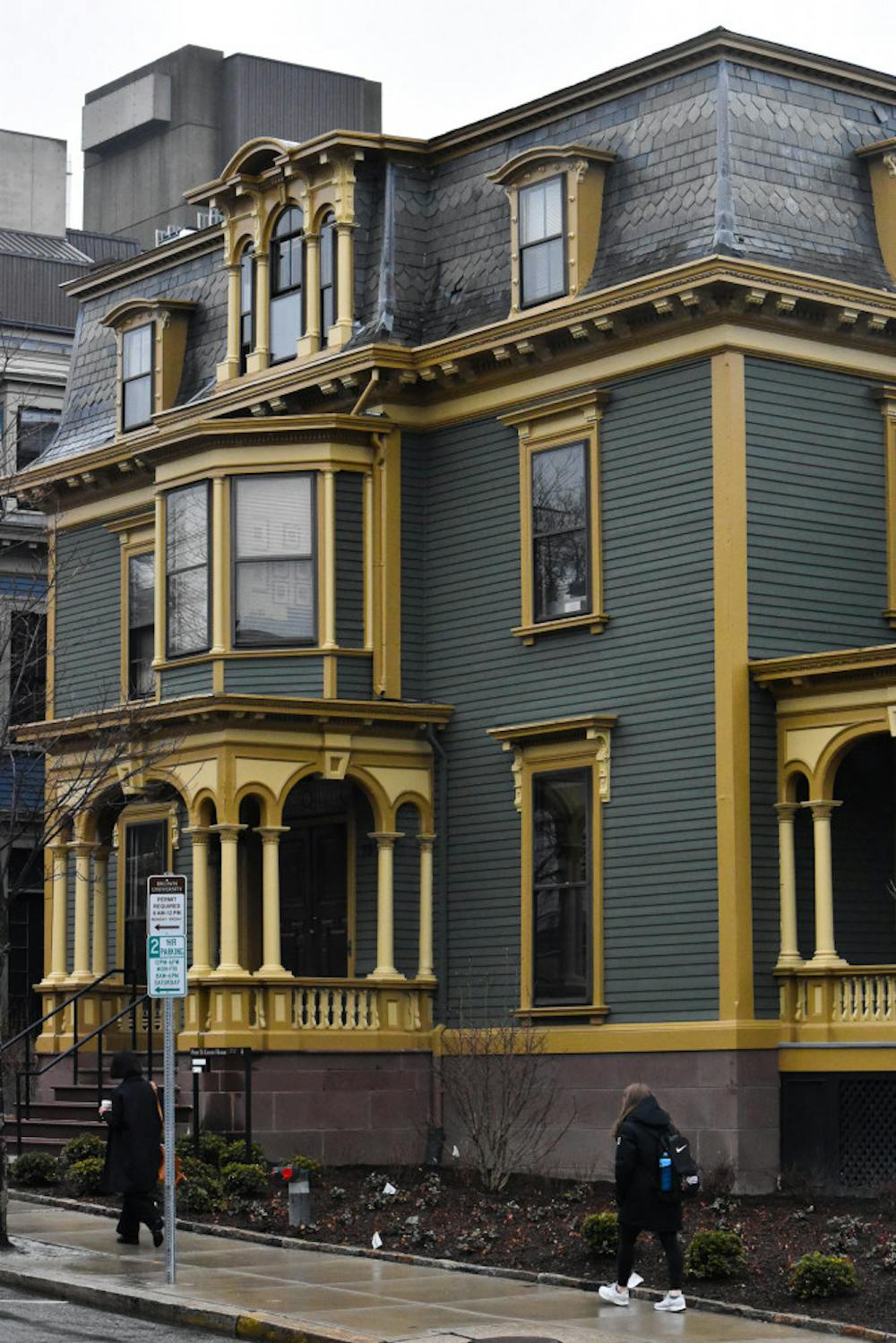After 18 months of renovations, Sharpe House reopened its doors to history professors and students alike last January.
Newly connected to Peter Green House on Brown Street via a glass bridge on the second and third floors and an open-air loggia on the ground floor, Sharpe House now boasts an elevator that makes all of its floors fully accessible to people with physical disabilities. The renovations also added two classrooms to Sharpe House, one by converting a faculty office and the other by adding an extension to the building, said Robert Self, professor and chair of the history department.
“The additions really leveraged the potential to have more of a symbiotic relationship between the two buildings,” said Albert Garcia, principal and co-owner of KITE Architects, the company tasked with renovating Sharpe House. “There’s a very open, even flow from one building to another. … They in effect act as one.”
The main priorities for the renovations included accessibility within the building, connectivity between the Sharpe and Peter Green houses and increased natural light in the buildings, Self said.
The renovations reimagined the layout of the interior of Sharpe House. Once a duplex separated by a party wall, the old Sharpe House had only one door per floor that connected the two halves of the building, Self said, making it a “very confusing and challenging building to navigate.”
KITE Architects tore down the dividing wall and created a new core for the building, which “eliminated the sense of the building being divided in half,” Self added. “It’s a much more comfortable space for those kinds of informal interactions,” in which students could study and chat with professors.
The new bridge connecting the two houses also makes all floors of Peter Green House accessible. “As the design unfolded,” Garcia said, “we found that ... if we configured the building in a certain way, we could potentially solve accessibility issues in the Peter Green building.” Previously, only two of the three floors of the Peter Green House were accessible.
“I have nothing but positive, incredible things to say about KITE with the job they did,” Self said. He also praised KITE Architects’ use of glass to bring natural light “as deep into the building as possible.”
Kaylee Ding ’20, co-coordinator for the History Departmental Undergraduate Group, said that she likes “that it’s all connected.”
“It’s nice that the history department is in one building since it makes it easier to build a community between history concentrators and for the professors to be so close” to one another, she said. During the renovations, professors and faculty situated in the Sharpe House were relocated to Norwood House and Arnold Laboratories. “It’s been frustrating having the history department located in so many different places,” she said.
The renovation process included the relocation of Sharpe House from its previous location on Angell Street using movable dollies in December 2018. The Sharpe House was moved to create space for the new Performing Arts Center between Angell and Olive streets, The Herald previously reported.
The inspiration behind the renovations for Garcia came from the Victorian-style of Sharpe House itself. “Whenever you are working with historic buildings, one of the more important things is to recognize and be respectful of the way the original building was fabricated as you consider the new construction.” He modeled the renovations by incorporating the material and stylistic choices of the old Sharpe House.
“As a history department, it was a nice parallel,” Garcia said. “The building becomes a nice metaphor to look toward the past and understand … how we look toward the future.”





